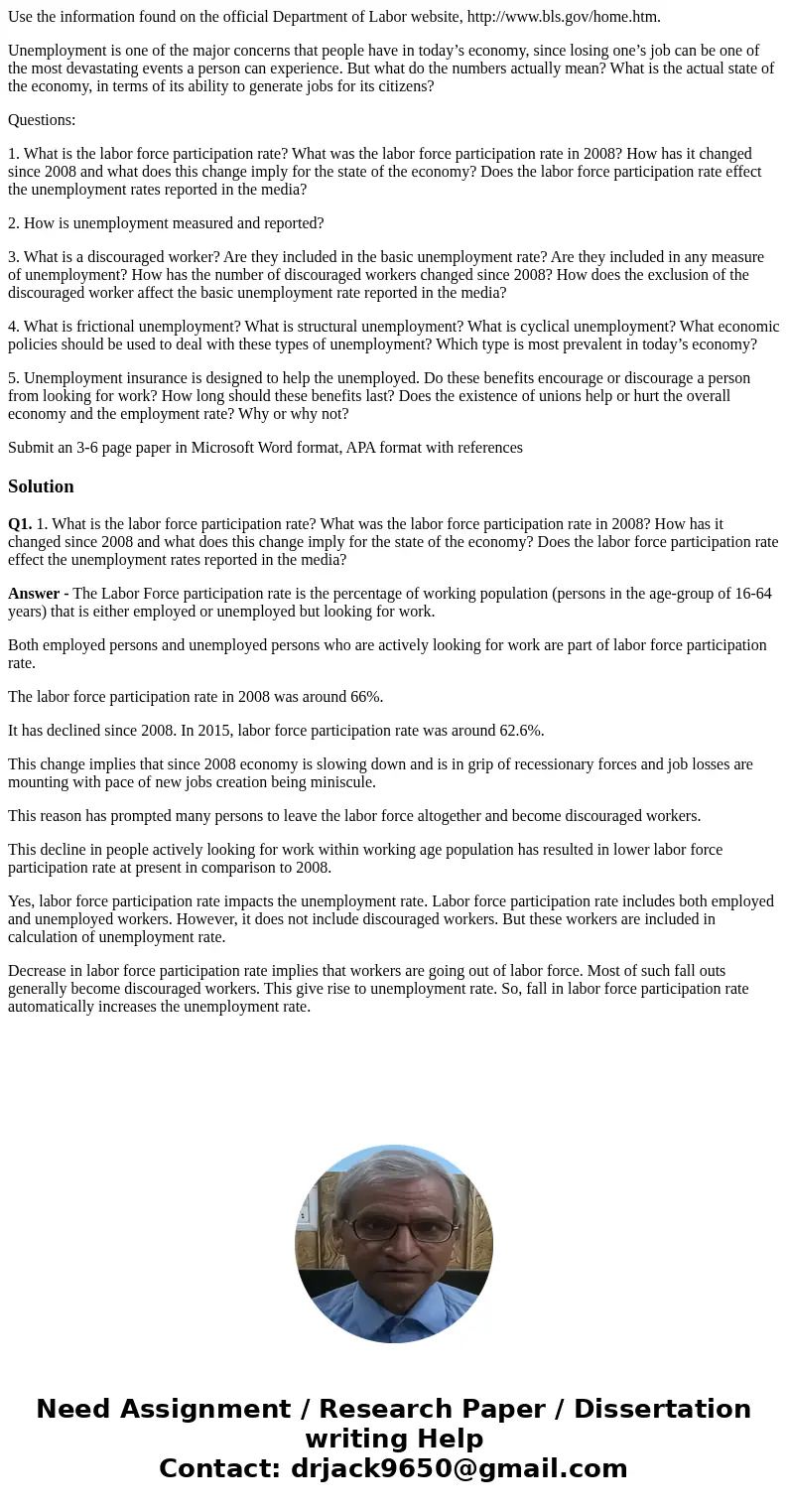Use the information found on the official Department of Labo
Use the information found on the official Department of Labor website, http://www.bls.gov/home.htm.
Unemployment is one of the major concerns that people have in today’s economy, since losing one’s job can be one of the most devastating events a person can experience. But what do the numbers actually mean? What is the actual state of the economy, in terms of its ability to generate jobs for its citizens?
Questions:
1. What is the labor force participation rate? What was the labor force participation rate in 2008? How has it changed since 2008 and what does this change imply for the state of the economy? Does the labor force participation rate effect the unemployment rates reported in the media?
2. How is unemployment measured and reported?
3. What is a discouraged worker? Are they included in the basic unemployment rate? Are they included in any measure of unemployment? How has the number of discouraged workers changed since 2008? How does the exclusion of the discouraged worker affect the basic unemployment rate reported in the media?
4. What is frictional unemployment? What is structural unemployment? What is cyclical unemployment? What economic policies should be used to deal with these types of unemployment? Which type is most prevalent in today’s economy?
5. Unemployment insurance is designed to help the unemployed. Do these benefits encourage or discourage a person from looking for work? How long should these benefits last? Does the existence of unions help or hurt the overall economy and the employment rate? Why or why not?
Submit an 3-6 page paper in Microsoft Word format, APA format with references
Solution
Q1. 1. What is the labor force participation rate? What was the labor force participation rate in 2008? How has it changed since 2008 and what does this change imply for the state of the economy? Does the labor force participation rate effect the unemployment rates reported in the media?
Answer - The Labor Force participation rate is the percentage of working population (persons in the age-group of 16-64 years) that is either employed or unemployed but looking for work.
Both employed persons and unemployed persons who are actively looking for work are part of labor force participation rate.
The labor force participation rate in 2008 was around 66%.
It has declined since 2008. In 2015, labor force participation rate was around 62.6%.
This change implies that since 2008 economy is slowing down and is in grip of recessionary forces and job losses are mounting with pace of new jobs creation being miniscule.
This reason has prompted many persons to leave the labor force altogether and become discouraged workers.
This decline in people actively looking for work within working age population has resulted in lower labor force participation rate at present in comparison to 2008.
Yes, labor force participation rate impacts the unemployment rate. Labor force participation rate includes both employed and unemployed workers. However, it does not include discouraged workers. But these workers are included in calculation of unemployment rate.
Decrease in labor force participation rate implies that workers are going out of labor force. Most of such fall outs generally become discouraged workers. This give rise to unemployment rate. So, fall in labor force participation rate automatically increases the unemployment rate.

 Homework Sourse
Homework Sourse